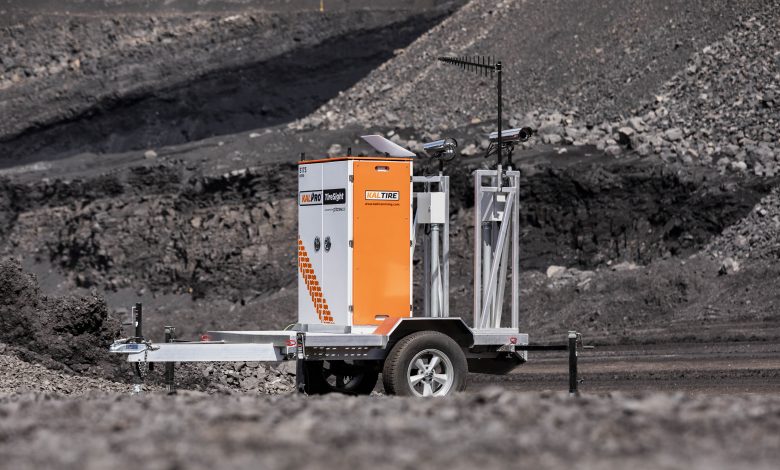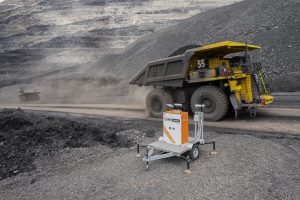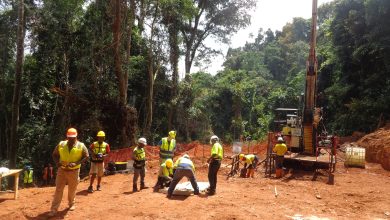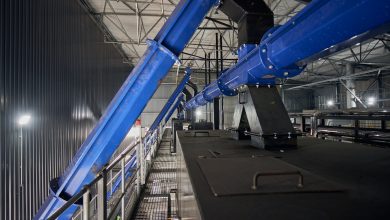
Through KalPRO TireSight autonomous tyre inspection solution, Kal Tire is providing real-time monitoring that is helping prevent costly downtime and extend tyre life across global mine sites.
This scene could be anywhere at a mine site in Africa: Damaged tyres on a haul truck waiting for its turn on the tyre pad, but the onsite team is busy finishing up another previous scheduled tire change. The downtime clock is ticking.
Unfortunately, this eventuality is not always factored in when mine management is planning production. But it is a reality with huge implications on operations, not least manifesting through lost production, or potentially irreparable damage to an asset necessitating replacement. To add insult to injury, sometimes heavy penalties and reputational damage follow.
High risk of tyre-related accidents
With traditional tyre management practices, there can be a high risk of tyre-related accidents. After all, a 63 inch tire when inflated to 110 PSI has enormous stored energy. The team at Kal Tire has observed this many times from its consultations on mines internationally. There is no second-guessing the possibility of incidents as mines ramp up production.
KalPRO TireSight autonomous tyre inspection
Kal Tire says it is time for African mining operations to be open to innovations in tyre management to meet their safety and production objectives. The company calls on them to utilise autonomous tyre inspection as an alternative to traditional approaches to tyre monitoring.
Kal Tire has been deploying its KalPRO TireSight stations, an autonomous tyre inspection solution powered by Pitcrew. AI, to mines in Canada, Chile and Colombia. Encouraging feedback from clients indicates that the solutions results in tangible gains, bringing a broad range of benefits. They are keen to participate in more projects to help mines increase haul truck uptime.

Managing Different Sites Globally
Managing different sites internationally for clients is no easy feat. Asked how the company pulls it through without glitches, says Christian Erdelyi, Kal Tire’s Mining Tire Group Manager, Mining Technology Solutions: “It takes more than just technology for Kal Tire to create an effective tyre management solution,”
On what the tyre solutions multinational brings to the table, Erdelyi explains to Mining Business Africa: “Fifty years of expertise, over ten years of mining fleet performance data collected in TOMS (Kal Tire’s Tire & Operations Management System), and its people.”
Thanks to Kal Tire’s rich know-how and Pitcrew. AI innovation, thermographic inspections of mining trucks has become the gold standard of tyre maintenance.
TireSight in Action
Strategically placed on a mine site, TireSight stations can detect some tyre conditions hidden from the human eye. As trucks pass the inspection stations, Pitcrew AI cameras carry out thermal inspections to record the front and rear tyres. “TireSight identifies friction heat coming from cuts, mechanical separations, or other damages on the tyre,” Erdelyi explains.
Responsible for the communication to the site and using data from the Tyre Pressure Monitoring System (TPMS) and other aspects, Kal Tire’s remote condition monitoring team conduct an expert review of all available information. This helps to distinguish whether the detected damage is a condition hidden under the tread, like a separation, or a condition like a cut where the belts or cords are exposed and the rubber is missing. They also focus on other conditions, like hydraulic leaks, coolant leaks, issues with struts on the truck, and more.
The workflow with accurate information allows the inspector to know in advance where the damage is located and what type of damage to look for. This then informs how Kal Tire’s technicians at the mine site respond to the event.
A Changing Tyre Management Experience
Considerably, Kal Tire and Pitcrew. AI are transforming tyre management. Many inspection scans reviewed by the remote condition monitoring team have been identified and reported. “While some sensors on trucks monitor several of those issues, there were occasions where the TireSight team was able to identify problems first and prevent greater damage,” says Erdelyi.
In one instance, the team was able to identify an engine leak on a truck during dumping. The notification enabled the truck to be shut down, preventing further top-end damage to a brand-new engine of a 400-tonne-class truck,” Erdelyi cites.
Nearly a Million Truck Scans
To date, over the last 12 months in particular, TireSight has scanned trucks nearly a million times. It has enabled the Kal Tire condition monitoring team to identify 4,000 cases of tyre and truck damage. Of those, 1,200 resulted in interventions where the mine site teams knew ahead of time and were informed about the upcoming maintenance needs.
At one customer site, the use of TireSight has improved the Mean Time Between Tire Service (MTBS) from 17 to 27 days. Furthermore, tyre life has increased by more than 25%, and the number of tyre shop events has decreased by more than 30%. All of this has resulted in a downtime reduction of around 3,000 hours per annum, without losing productivity. Erdelyi attributes this success to the collaboration between the customer, OEM, Pitcrew and Kal Tire as the tyre service provider.
Meeting Mines’ Unique Needs
Noteworthy, TireSight’s success is down to Kal Tire’s unique approach for each mine, which is two-fold:
- If the main goal is to prevent tyre fires from friction heat, trucks need to be monitored with higher frequency. Strategic locations across the haul road help scan those trucks multiple times per hour.
- If the main goal is to identify tyres early enough in their life for repair, positioning the station by fuel depots may be sufficient, allowing trucks to be scanned up to twice a day. Multiple systems per mine site can help achieve maximum fleet coverage.
Opportunities in Autonomous Tyre Inspection
So after KalPRO TireSight’s success, what’s next?
Always forward looking, KalTire sees great opportunity in autonomous open-pit mining operations, Erdelyi reveals. Typically, autonomous machines need daily inspections, but they operate best without interruptions from humans. When humans enter autonomous areas, they need to undergo additional training, and exclusion zones and other safety precautions need to be established.
“This presents a good opportunity for TireSight,” Erdelyi says. “We can inspect these machines without requiring a human to enter the autonomous zone or causing dispatch interference. Besides, an AHS truck does not need to leave its dedicated working area for an inspection. For staffed trucks, operators can more easily detect issues in the driving behavior of the vehicle, but for AHS trucks, this is more difficult.” This statement underlines Kal Tire’s commitment to diligently detecting tyre defects to increase haul truck uptime.






